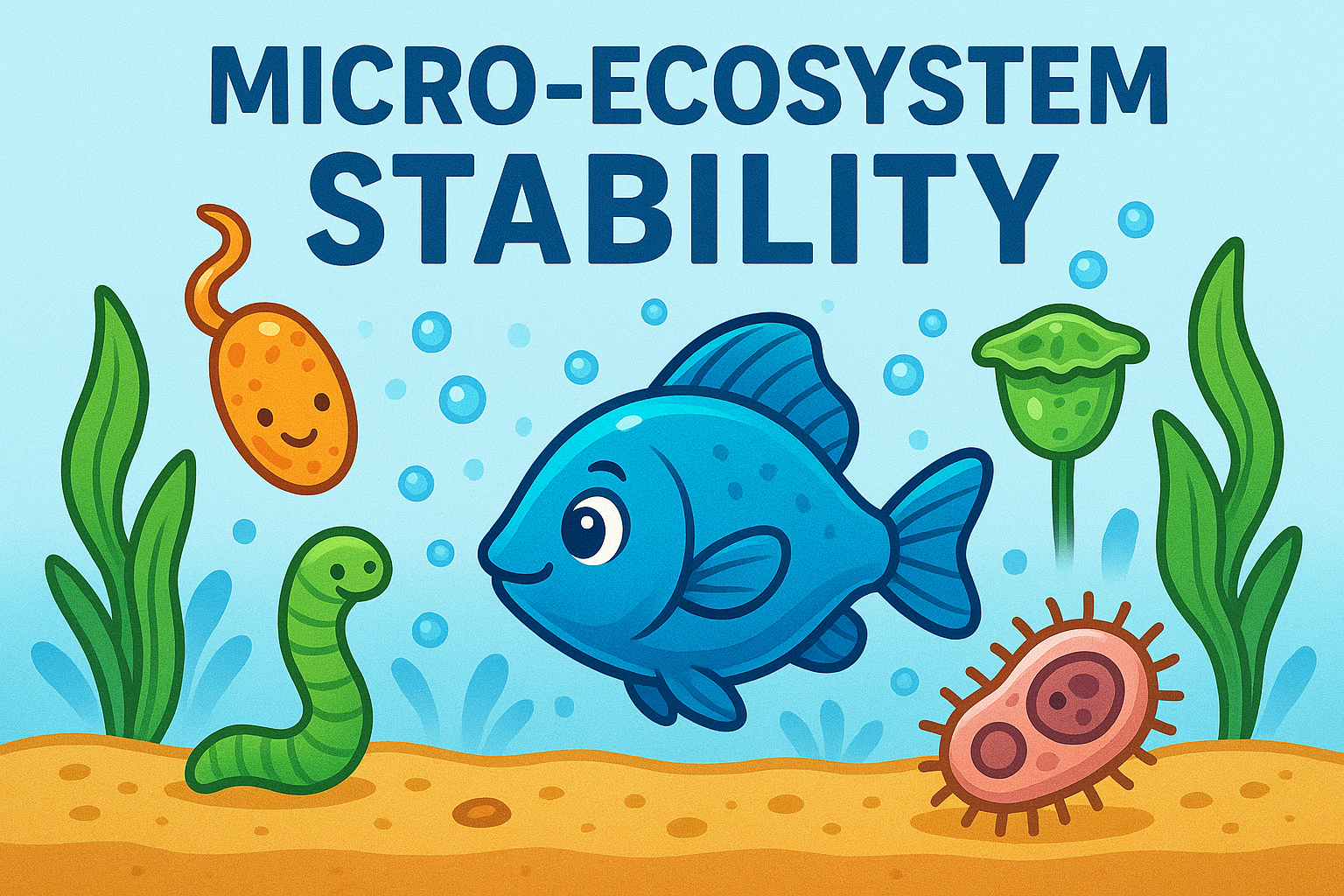Automated Dosing Systems & Micro-Ecosystem Stability
⚗️ Automated Dosing Systems & Micro-Ecosystem Stability
⚠️ 1. What “Over-Correcting” Means
- 🤖 Automated dosing systems add chemicals (alkalinity, calcium, trace elements, nutrients) in response to programmed schedules or probe feedback.
- ⚠️ If they react too aggressively to short-term fluctuations, they can swing parameters instead of stabilizing them.
- 🌀 This creates feedback loops: the system keeps dosing up/down without allowing the tank to naturally stabilize.
🌊 2. How Over-Correction Destabilizes Aquaria
🧩 Water Chemistry Swings
- 🧪 Alkalinity (KH) & Calcium (Ca):
- ⚡ Overdosing → calcium carbonate “snowstorms,” precipitation, clogged pumps.
- 📉 Rapid swings stress corals & calcifying invertebrates.
- 🌱 Nutrients (Nitrate & Phosphate):
- 🟢 Excess → algal blooms, cyanobacteria outbreaks.
- 🔴 Underdosing → starving plants, microbial die-off.
- 🔬 Trace Elements (Iron, Iodine, Copper):
- ✅ Needed in ppb levels.
- ☠️ Overdose = toxic to shrimp, snails, corals.
🦠 Microbial Shifts
- 🧫 Microbes thrive in narrow nutrient windows.
- ⚖️ Sudden changes → one group blooms, others crash.
- Examples:
- 🟢 Cyanobacteria dominate in phosphate surges.
- 🟤 Dinoflagellates bloom if nitrate is stripped too quickly.
- 🟣 Algal shifts destabilize food webs for grazing inverts/fish.
🐟 Fish & Invertebrate Stress
- 🫁 Gill irritation from pH/KH spikes.
- 🐌 Shrimp & snails very sensitive to copper/iodine overdoses.
- 🐠 Fish show lethargy, flashing, or gasping during unstable dosing cycles.
⚙️ 3. Why Automation Over-Corrects
- ⏱️ Lag in feedback loops: The system doses before natural processes (photosynthesis, feeding cycles) finish balancing parameters.
- 📊 Sensor dependence: One faulty probe (pH, KH) can trigger dangerous overdoses.
- 📈 Chasing numbers: Reacting to daily wiggles instead of long-term averages.
- ❌ Lack of dosing caps: No “maximum limit” programmed = unlimited correction potential.
✅ 4. How to Prevent Over-Correction
- 📈 Follow trends, not blips: Dose according to rolling averages (daily/weekly), not single datapoints.
- 🕐 Small, frequent doses: Spread additions throughout the day → smoother chemistry, mimics natural uptake.
- 🔒 Failsafes:
- Daily dose caps.
- Alarm notifications if dosing exceeds thresholds.
- 🧪 Verification: Regular manual testing with hobby kits to confirm automation.
- 🧑🔬 Hybrid approach: Let automation handle baseline stability, while the aquarist adjusts long-term targets.
📊 Visual Summary
| Factor 🛠️ | Over-Correction Risk | Impact on Micro-Ecosystem |
|---|---|---|
| 🧪 Alk/Ca dosing | High if misprogrammed | Coral stress, precipitation |
| 🌱 Nutrient dosing | High | Algal/cyano blooms or starvation |
| 🔬 Trace element dosing | Very high (ppb range) | Toxicity to inverts/fish |
| 🤖 Sensor dependence | High | Runaway dosing on faulty readings |
| ⏱️ Dosing frequency | Safer when slow & frequent | Mimics natural balance |
🧭 Bottom Line
- Yes — automated dosing can destabilize aquaria by “over-correcting.”
- This happens when systems chase short-term noise, dose without limits, or respond to faulty probes.
- Consequences: 🧪 parameter swings, 🦠 microbial imbalances, 🐠 stressed livestock.
- Proper safeguards (trends, limits, manual checks) turn automation into a stabilizer instead of a destabilizer.

Impulsada por Lightspeed
Mostrar precios en:USD